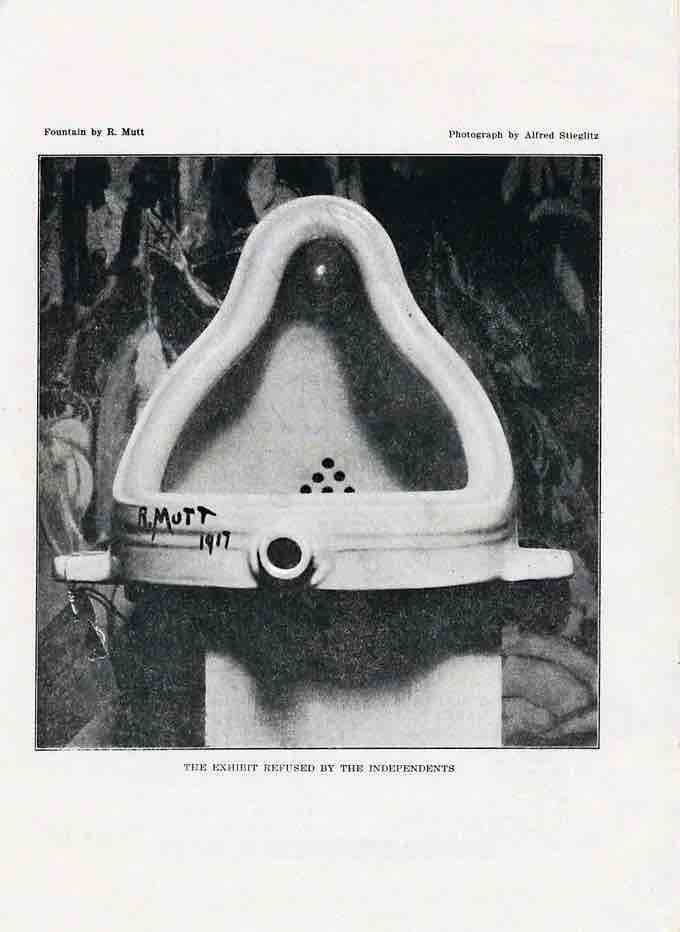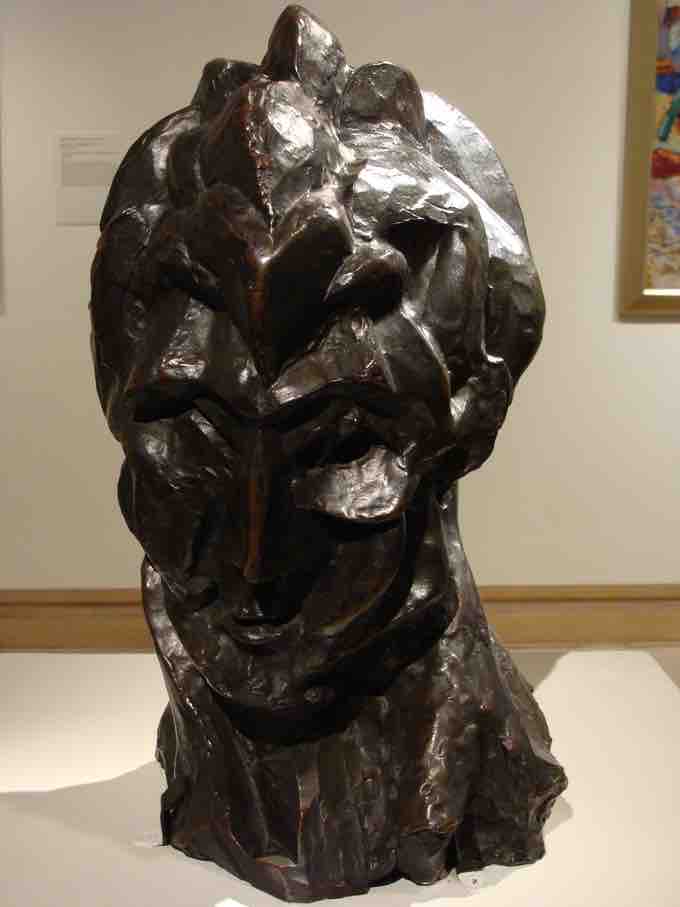Auguste Rodin, along with artists like Edgar Degas and Paul Gauguin, developed a radical new approach to the creation of sculpture in the nineteenth century. Rodin was a naturalist, less concerned with monumental expression than with character and emotion. Departing from centuries of tradition, he turned away from the idealism of the Greeks and the decorative beauty of the Baroque and neo-Baroque movements. His sculpture emphasized the individual and the concreteness of flesh, suggesting emotion through detailed, textured surfaces and the interplay of light and shadow.
The modern sculpture movement essentially began during the Rodin exhibit at the Universal Exhibition in Paris in 1900. At this event, Rodin showed his Burghers of Calais, Balza and Victor Hugo statues, along with the Thinker . Though all of these are representational works of art, Rodin's approach to form paved the way for increasingly experimental and abstract art.

"The Thinker" by Auguste Rodin
Rodin's experiments with form, visible in the Thinker, launched modern abstract sculpture.
Cubist sculpture developed in parallel with cubist painting, centered in Paris beginning around 1909 and evolving through the early 1920s. The style is most closely associated with the formal experiments of Georges Braque and Pablo Picasso. Others were quick to follow Braque and Picasso's lead in Paris, including Raymond Duchamp-Villon, Alexander Archipenko, Joseph Csaky, Jacques Lipchitz, Henri Laurens and Ossip Zadkine.
During his period of Cubist innovation, Picasso revolutionized the art of sculpture by by combining disparate objects and materials into one sculptural work - the sculptural equivalent of collage in two dimensional art. Just as collage was a radical development in two dimensional art, so was Cubist construction a radical development in three dimensional sculpture .
The advent of Surrealism led to objects being described as "sculpture" that would not have been termed as such previously. Surrealist sculpture made use of many of the same techniques as other forms of Surrealist art, such as games to tap into the unconscious mind such as coulage, a kind of automatic or involuntary sculpture made by pouring a molten material into cold water. As the material cools it takes on what appears to be a random form, though the physical properties of the materials involved may lead to a conglomeration of discs or spheres. The artist may use a variety of techniques to affect the outcome. Involuntary sculpture is described by Surrealists as sculpture created by absent-mindedly manipulating something, such as rolling and unrolling a movie ticket, bending a paper clip etc.
Marcel Duchamp had a deep impact on the evolution of abstraction in sculpture. He originated the use of the "found object" or "readymade" with pieces like Fountain (1917), a urinal that was displayed as art. Duchamp experimented a great deal with sculpture, creating readymades, assemblages and kinetic works. His notion that anything can be art that an artist names art is an idea that has resonated throughout many historical and contemporary movements. Though never considered himself to be a Surrealist, he was involved socially with many key members of the movement and his ideas were of influence.
Duchamp participated in the design of the 1938 International Surrealist Exhibition, which was held at the Galerie des Beaux-arts, Paris. The show featured more than 60 artists from different countries, including approximately 300 paintings, objects, collages, photographs, and installations. The surrealists wanted to create an exhibition which in itself would be a creative act, and André Breton named Duchamp, Wolfgang Paalen, Man Ray, Salvador Dali, and Max Ernst to help h
The work of Constantin Brâncuşi at the beginning of the century paved the way for later abstract sculpture. In revolt against the naturalism of Rodin and his late-19th-century contemporaries, Brâncuşi distilled subjects down to their essences as illustrated by his Bird in Space series (1924). These elegantly refined abstract forms became synonymous with 20th-century sculpture.
Brâncuşi's impact, with his vocabulary of reduction and abstraction, is seen throughout the 1930s and 1940s, and exemplified by artists including Gaston Lachaise, Sir Jacob Epstein, Henry Moore, Alberto Giacometti, Joan Miró, Ásmundur Sveinsson, Julio González, Pablo Serrano, and Jacques Lipchitz.

Marcel Duchamp, Fountain
Duchamp's appropriation of a urinal as a piece of art challenged the prevailing definition of sculpture.

Head of a Woman, by Picasso, 1909
Picasso was a pioneer in early 20th century Cubist sculpture.